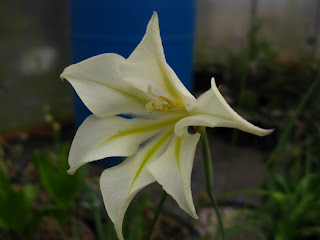Summer must be coming because the Gladiolus are starting to bloom!
Gladiolus tristis
The marsh Afrikaner
This is going to be a lame post, because I am super busy. If only it was as easy to clone myself as it is to clone plants! I would have four of me, one to tend the garden, one to fix the proverbially broken tractor, one to mow the lawn, and then I could just sit back and enjoy my daughters softball games!
Seriously stay tuned though, because I'm working on a riveting expose of the infamous Fritillaria biflora X purdyi complex that is not to be missed.
This weird bulbous geranium thing that ate the label also reminds me of summer. The pot is literally so crowded with bulbs I think it sucked the label down and devoured it.
The weather: It's been off and on, like a light switch. It's supposed to get down into the 30's for lows this week. But next week they are saying a high of 84! Try explaining that to the tomato seedlings.












+(480x640).jpg)
+(480x640).jpg)
+(640x480).jpg)
.jpg)
+(480x640).jpg)
.jpg)
+(640x480).jpg)
.jpg)
+(640x480).jpg)
+(640x480).jpg)
+(480x640).jpg)
+(640x480).jpg)
.jpg)
.jpg)